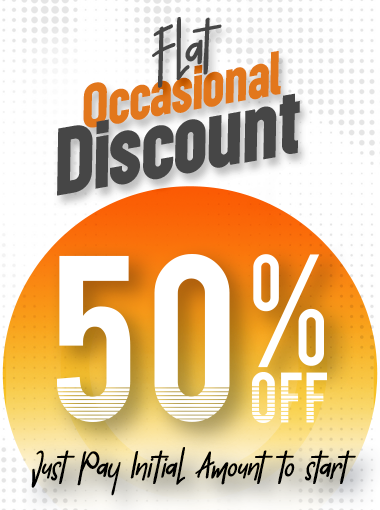How to Include Social Media Connectors in Website Development?
Incorporating social media connectors into a website is a key element of custom website development. These connectors enhance user engagement, increase traffic, and improve the overall user experience. Here’s how to effectively integrate social media connectors into your website.
Choosing the Right Social Media Platforms
Identify Key Platforms
Start by identifying the social media platforms that are most relevant to your audience. Common options include Facebook, Twitter, Instagram, LinkedIn, and Pinterest. Each best website development help platform has different strengths and appeals to various demographics for an affordable website development help, so select the ones that align with your brand and audience.
Seamless Integration
You can buy website development service to ensure that the chosen platforms blend seamlessly with your website's design and functionality. This is an essential part of custom website development as it ensures a smooth and cohesive user experience. The platforms should be integrated in a way that enhances the website without disrupting its aesthetics and usability.
Adding Social Media Icons
Design and Placement
Create social media icons that match your website’s theme and brand identity. Place these icons in visible areas such as the header, footer, or sidebar. This makes it easy for users to locate and click on them. Consistent and unique website development can help via cheap website development service to maintain a professional appearance.
Utilizing Plugins and Widgets
Many content management systems (CMS) like WordPress, Joomla, and Drupal offer plugins and widgets for social media integration. These tools simplify the process of adding social media icons to your site and often come with customization options to fit your needs.
Social Media Sharing Buttons
Boost User Sharing
Incorporate social media sharing buttons on your website to encourage users to share your content. Place these buttons on blog posts, product pages, and other content-rich areas. This not only increases your reach but also drives more traffic to your site.
Customizable Options
Customize the sharing buttons to align with your website's design. You can adjust their look, size, and placement. Ensure they are easily visible but not intrusive, providing a pleasant user experience needed for a brand identity development.
Embedding Social Media Feeds
Showcase Dynamic Content
Embedding social media feeds allows you to display dynamic content directly on your website, such as your latest tweets, Instagram photos, or Facebook posts. This keeps your website content fresh and engaging.
Using APIs
Leverage the social media platform’s API to embed feeds. Most platforms offer APIs or embedding tools that allow you to integrate their content seamlessly into your website. Make sure to follow the platform’s guidelines to maintain functionality and compliance.
Implementing Social Login Options
Ease User Registration
Allow users to sign up or log in using their social media accounts. This simplifies the registration process and enhances user experience. Social logins are particularly beneficial for websites that require user accounts for access or interaction.
Secure Integration
Ensure that social login options are securely integrated. Use reputable third-party services or plugins that handle authentication securely. Protect user data and privacy via cheap website development deal by following best practices and legal requirements.
Analyzing and Optimizing Social Media Integration
Monitor Performance
Use analytics tools to track the performance of your social media connectors. Monitor metrics such as click-through rates, shares, and user engagement. This data helps you understand how users are interacting with your social media elements.
Continuous Improvement
Regularly review and optimize your social media integration based on performance data. Update icons, adjust placements, and experiment with different strategies to improve user engagement and site traffic.
Conclusion
Integrating social media connectors is a vital part of custom website development. It enhances user engagement, drives traffic, and improves the overall user experience. By carefully selecting platforms, designing icons, adding sharing buttons, embedding feeds, and implementing social logins, you can create a website that seamlessly integrates with social media. This integration not only boosts your online presence but also contributes to your site's success.
Related Blogs
- Creating Engaging Social Media Graphics for Digital Marketing Success
- How to Use Custom Hashtags in Social Media Digital Marketing Posts
- How to design Social Media Thumbnails
- Get Details of the best Digital Marketing Companies
- Website Design Optimization Process
- Ways to Use Template or Theme with No Coding Website Design Experience
- Design WebAssembly (Wasm) Website Development
- How to Optimize Website Loading Speed?
- Google Sites: Best Online Website Design Builders
- What Are the Best Hosting Platforms for The Website Design?
- Specific Elements Needed in How to Website Design for an E-Learning Platform
- Agile Marketing: The Key to Keeping Up with Marketing Trends
- How to Avoid Ad Fatigue in Modern Digital Marketing Campaigns in 2024?
- How to Do Mastery of AI Assisted Tools in Digital Marketing?
- Tips to Migrate Html Blog Site to WordPress
- How to Set up GA4 Analytics for our Website for Enhanced Digital Marketing?
- Learn Spline 3D Design Integrating Spline/Webflow On Website Design Landing Page
- Importance of Source Files as AI, EPS, PDF, JPG, PNG Logo File Design
- Process of Low-Coding Website Design
- Tips to Remove Noise from Social Media Marketing Videos
- Tips for Divi Theme Site Optimization for Website Development
- How to Develop Carousal Style Websites?
- Open Source Integrated Web Development Environment
- Tips for CSS for a New Website Project to Modify Style of Search Bar
- How to Develop Online Store on Shopify Development
- Tips for Website Design for PSEE Basler Model Creation/Verification
- Tips for Dynamic Customized Website Design Using JavaScript Arrays
- How to Do Klaviyo Setup Assistant for Digital Marketing?
- Guide to Use Website Development Methodology Using AngularJS
- Importance of Using Flat Website Design to Enhance Brand Message
- How to Include Social Media Connectors in Website Development?
- Tech Stack and Infrastructure Natively Enable Digital Marketing Content Discovery
- How to Generate and Use Meta Ads in Digital Marketing?


